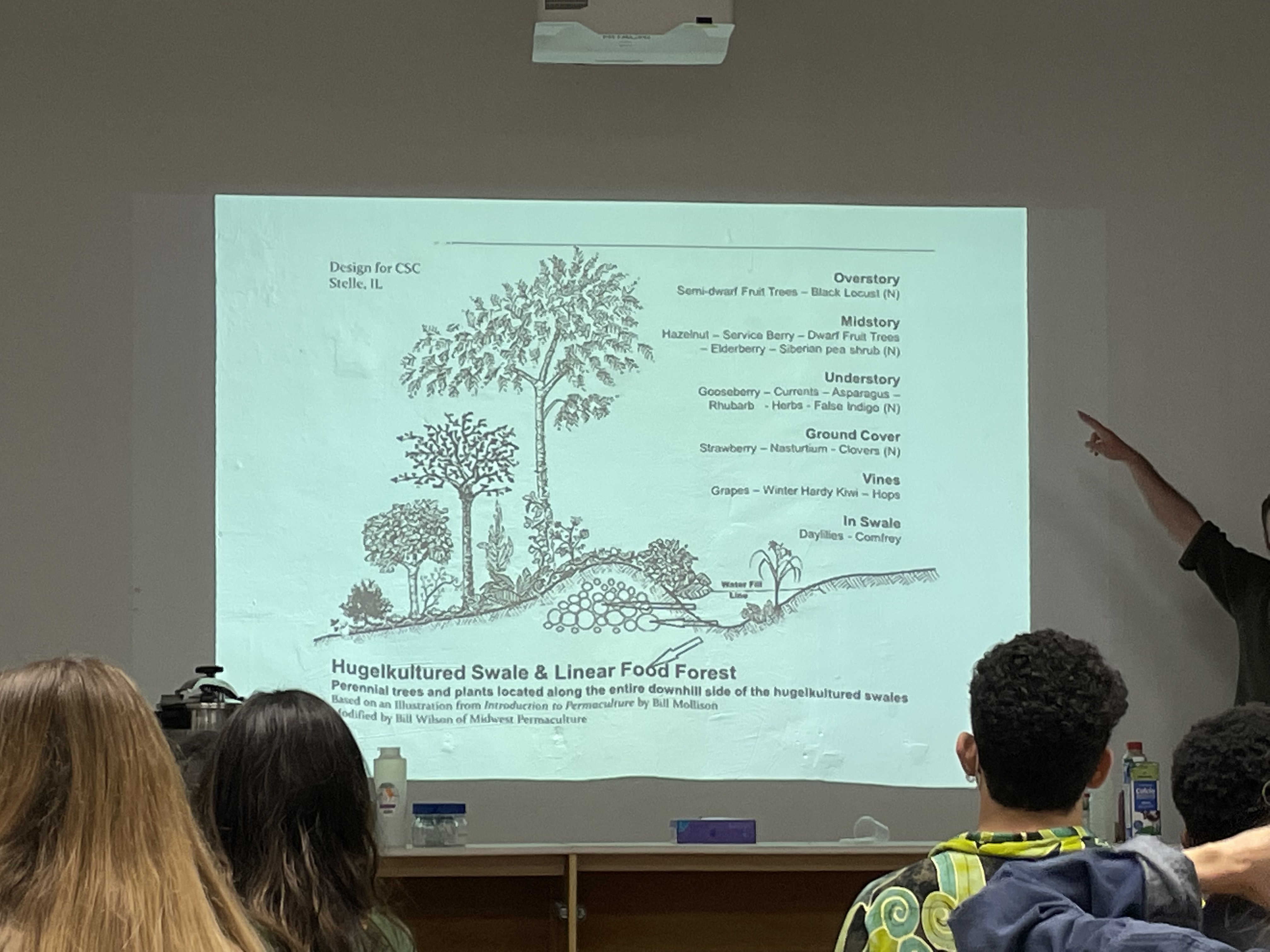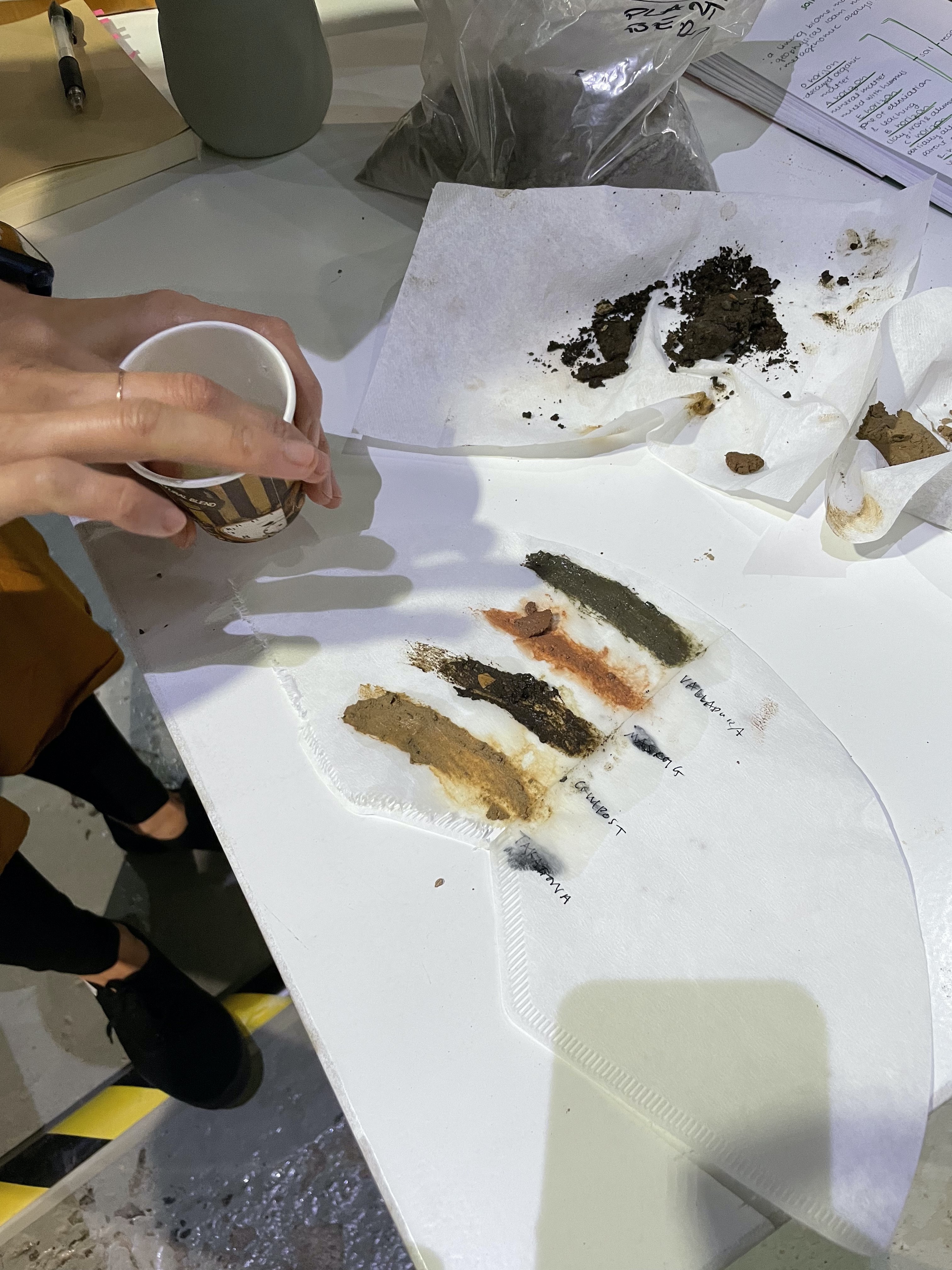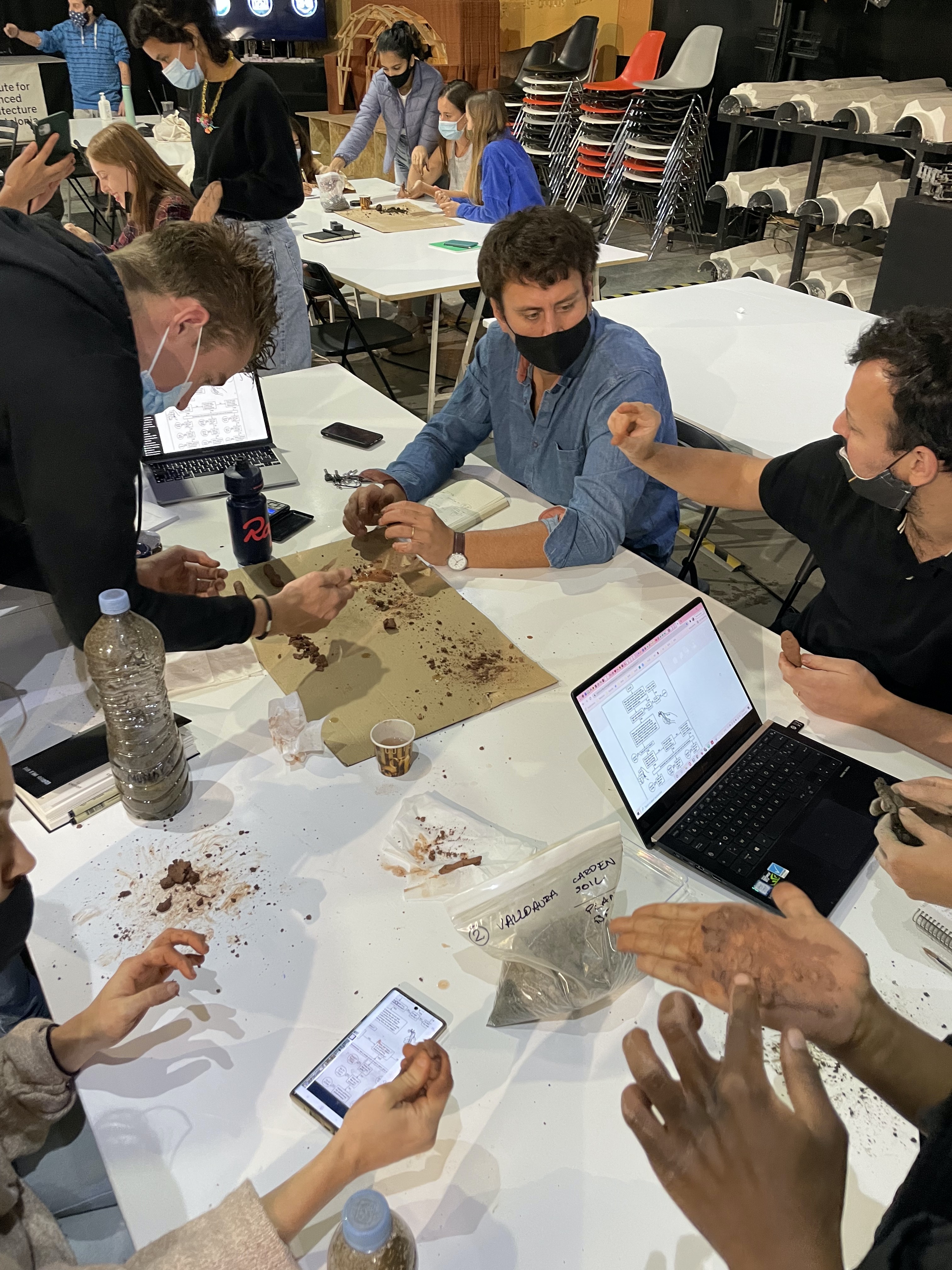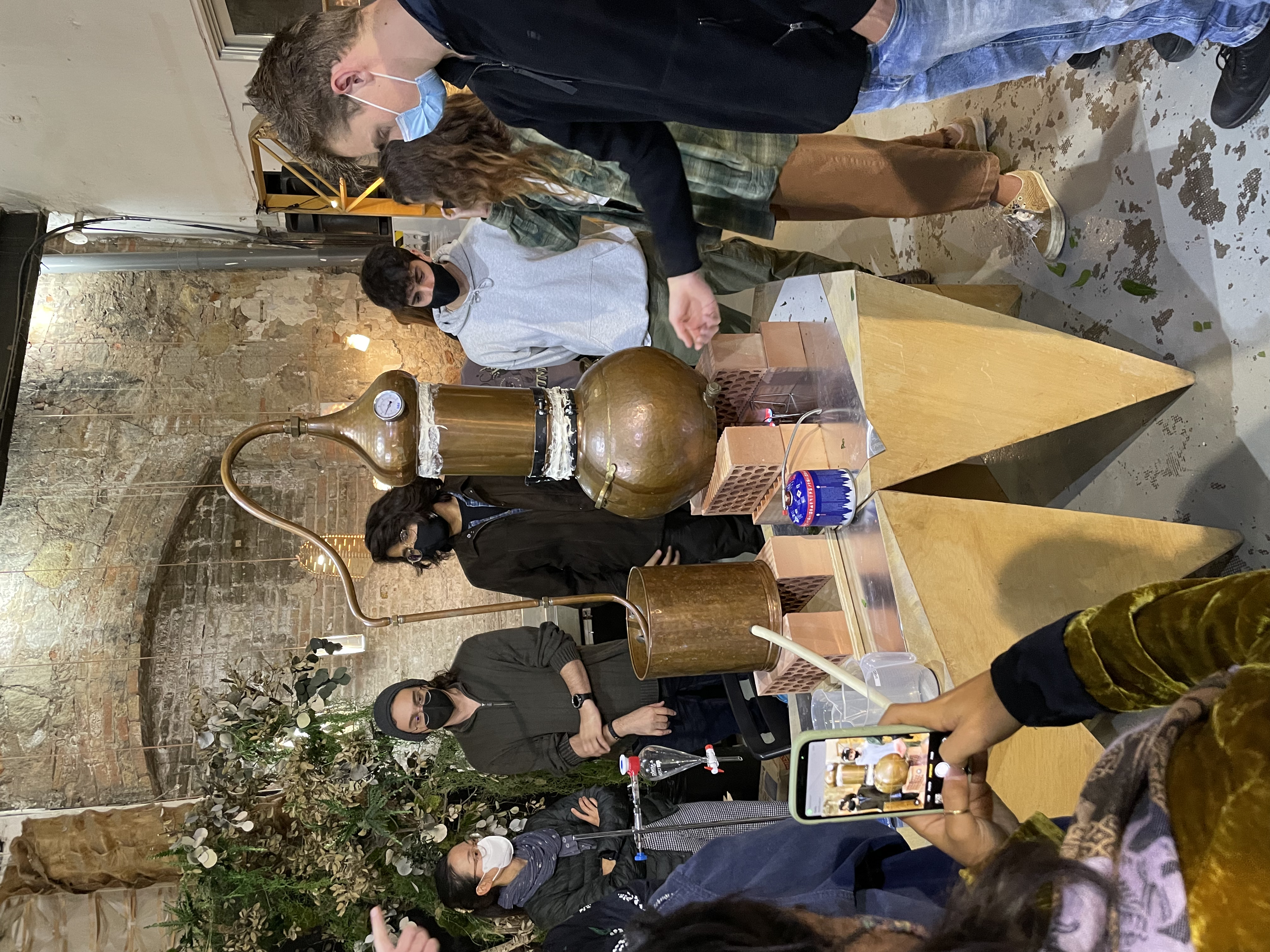On Conventional Agriculture Alternatives
Structured as a primer to dive into the exceedingly multifaceted and complex topic of ecosystems and agriculture, we began understanding the current state, scale and impact of industrial agriculture. This also included shedding some light into what could follow after as sustainable alternatives, such as low-intervention food forests and small-scale computational agriculture.


Transitioning from conventional industrial agriculture (left) to a diverse fruit forest (right).
Classifiying Soil Samples
Following a guideline for classifying different soil types, we had a look at four samples from different parts of the country and of different quality. This meant categorizing the samples into clay, sand and silt, as well as the multiple gradients between those. It became very clear that nutrient-rich hummus differs dramatically from other types of soil both in color and texture. But also the geographic origin was easily distinguished by the color, such as the iron-rich red soil that was collected from Jonathan's patch of land south of Tarragona.



Different impressions from investigating soil samples of several textures and colors.
Investigating Nutrient Compositions
Diving further into investigating the different soil samples, we moved on to testing their chemical composition. In group work, we looked at the level of nitrate, nitrite, PH-level and phosphate. Apart from their differing visual characteristics, the samples also varied in terms of their nutrients. Below the process of measuring nitrate levels is documented alongside its outcomes.




PH Tests of old (depleted) soil (left) and fresh, nutrient-rich hummus from Valldaura (right).
On Beekeeping, Hornets and the Varroa destructor
In this lecture we learned all about bees and their crucial role as pollinators, as well as the beekeeping profession and the challenges of that come with it. This, among many, includes an alien species threatening bee populations throughout Europe and North America and a the Varroa Destructor, a parasite which equally contributes to wiping out bee hives across the country. On the positive side, Jonathan highlighted the project of open-source bee hives, which he initiated together with Fab Lab Barcelona. The goal of this project is to give beekeepers across the world access to inexpensive and modular bee hives ready for fabrication on-site. Additionally he highlighted the potentials of equipping these hives with sensors to determine the bee hive's health and monitor more specific aspects like the number of queens present in the hive.
Essential Oils Production
On the very last day, we practiced making essential oils from biomatter, in this case laurel (bay) leaves. It was humbling to see the effort that goes into breaking down the leave's structure by heating it and subsequently cooling the steam, just to extract a handful of milliliters of essential oil from what was originally a sizable bag of leaves. This nicely wrapped up an inspiring and thought-provoking seminar that shed light on the economical and ecological dynamics that shape our current state of agriculture, its individual parts and possible future alternatives.

Distilling essential oil from laurel leaves.
Summarizing a Scientific Paper
To foster a deeper understanding of the structure and content of scientific research papers and in order to lose some of the hesitations in approaching them, we were tasked so summarize a paper of our choice. In the following, I will summarize the paper Food forests: Their services and sustainability, published in the Journal of Agriculture, Food Systems, and Community Development by Stefanie Albrecht (Leuphana University Lüneburg) and Arnim Wiek (Arizona State University) in July 2021.
In the paper, the author presented their findings on the current state and potentials of fruit forests around the world. Identifying them as a promising alternative to the current state of industrial agriculture, reliable data is surprisingly rare to find on how this form of agroforestry is employed nowadays. After sampling and categorizing 209 food forests around the world, they selected 14 exemplary food forests in Europe, Northern America and Southern America to conduct in-depth case studies and assess their sustainability.
Their data shows that the average size of the food forest surveyed was 1,9 ha, with 50% of the food forests being 1 ha or below. Most of them are managed by non-profit organizations (46%) and conventional businesses (31%). The primary goals of the food forests surveyed are education (40%), community building (32%) and food production (11%). Further, the selected food forests were examined and judged by social-cultural, environmental and economical criteria. One of the stand-out results was that the weak point in many of the surveyed sites (8 of 14) was the economic viability. This is often due to a lack of a business plan, financing plan and the hesitancy towards conventional business practices. Additionally some of the sites lacked people with in-depth agricultural knowledge. The authors of the paper conclude that food forests, although offering a broad range of benefits, most of them focus on social-cultural services (education, community building) and less on food production. While often being held back by their economic inexperience, a large part of the food forests surveyed succeeded in the aspect of community work and inclusive ownership concepts, such as cooperative, land trust, and foundation models. Furthermore, most sites received a very good sustainability score by the authors of the paper, which highlights the ecological potential and the promising outlook of this agriculture solution.
Useful links / For further reading
Braiding Sweetgrass (Book)
ROMI (EU-funded Agriculture Robotics)
Digital Naturalism (Science as an Inquiry)
PointClouds (Storing and Embedding LiDAR data)
OpenTrees (Open City Tree Database)
EcoDialectic: ReWilding a Catalan Landscape with AgroForestry, AI & Microbes (Scientific Paper)
OpenSourceBeeHives
Entering an Era of Computational Agriculture (Article)
Countryside, A Report by Rem Koolhaas (Book)
Do Plants Have Something To Say? (NY Times Article)
Can Prairie Dogs Talk? (NY Times Article)
Food Forests: Their Services And Sustainability (Scientific Article)
